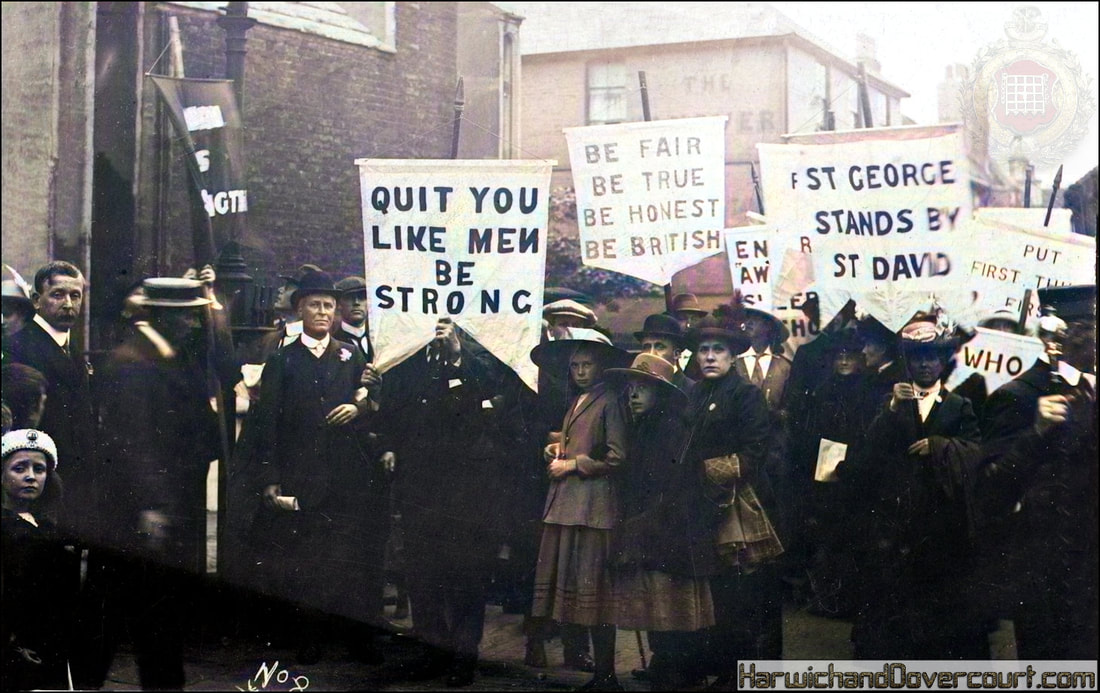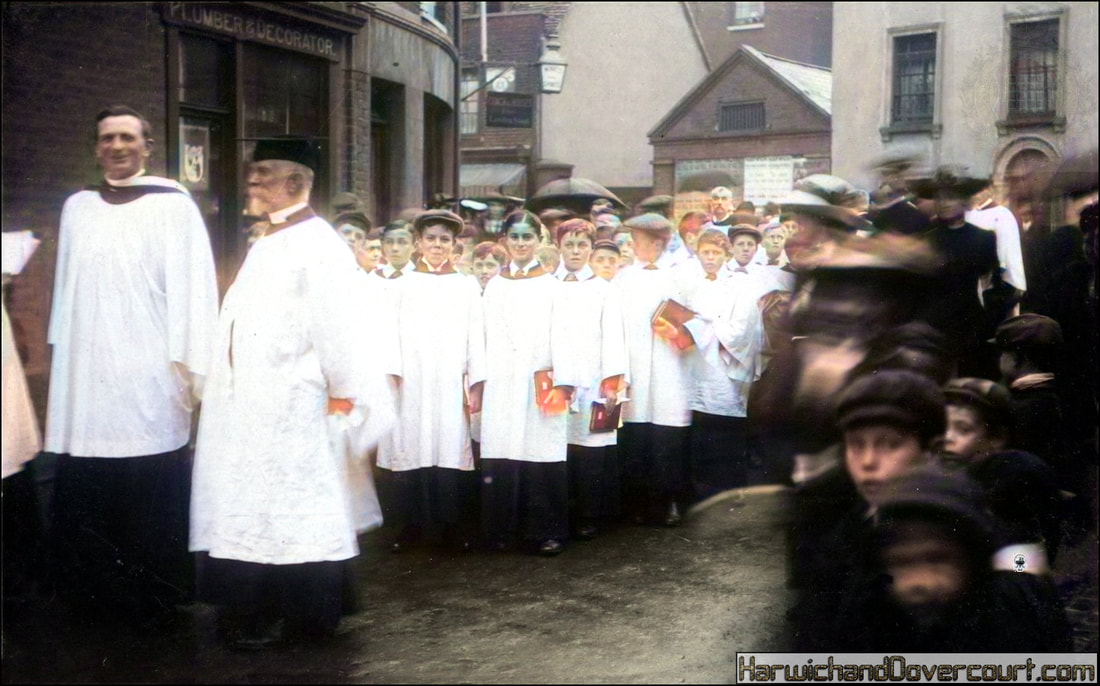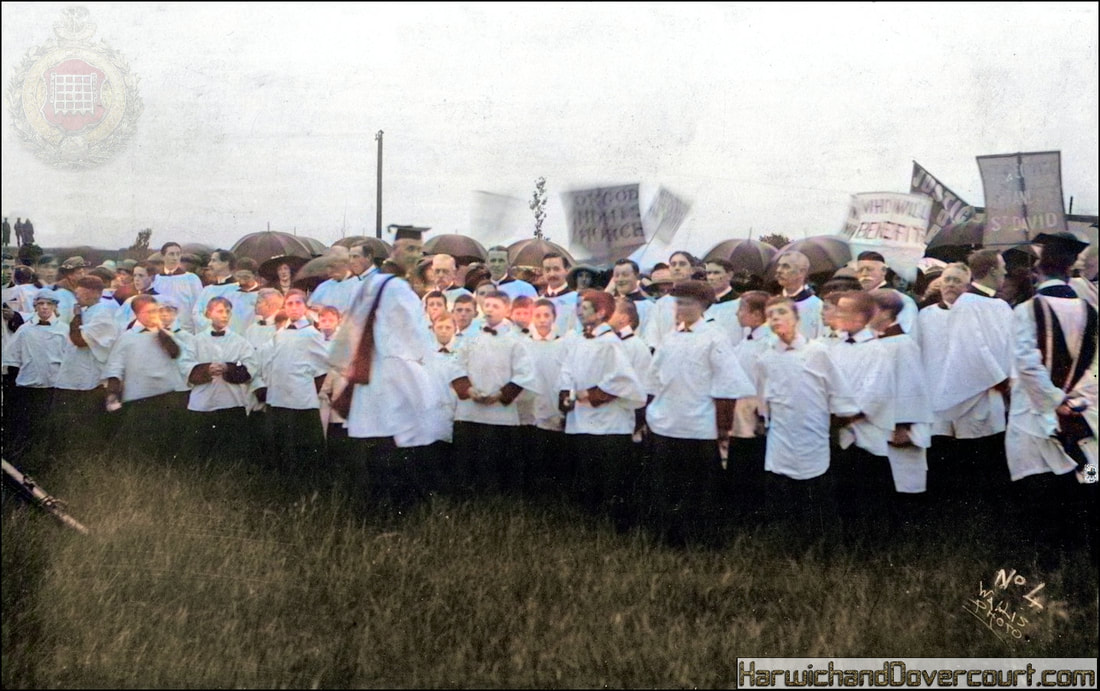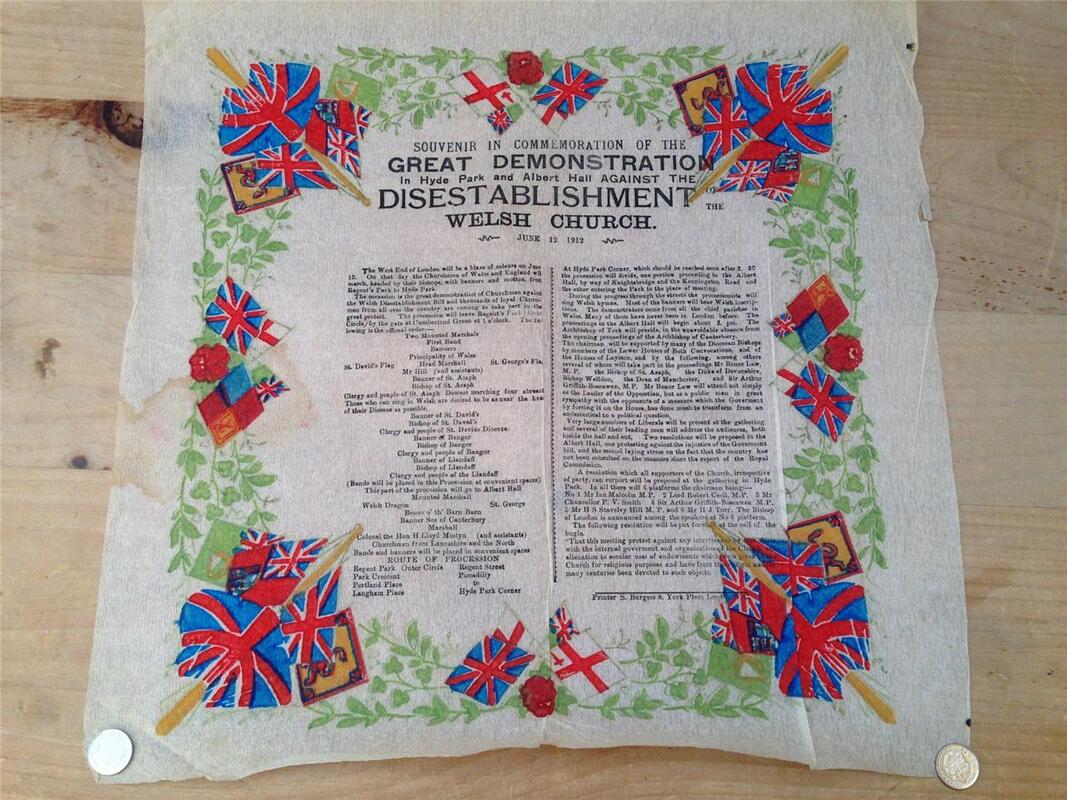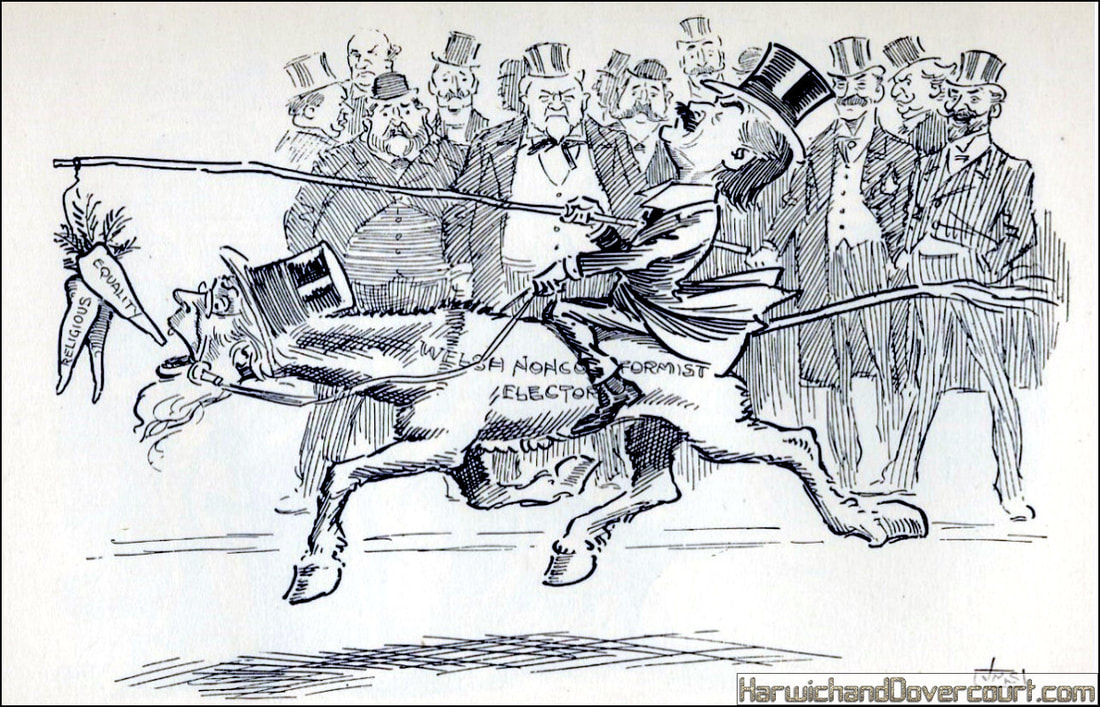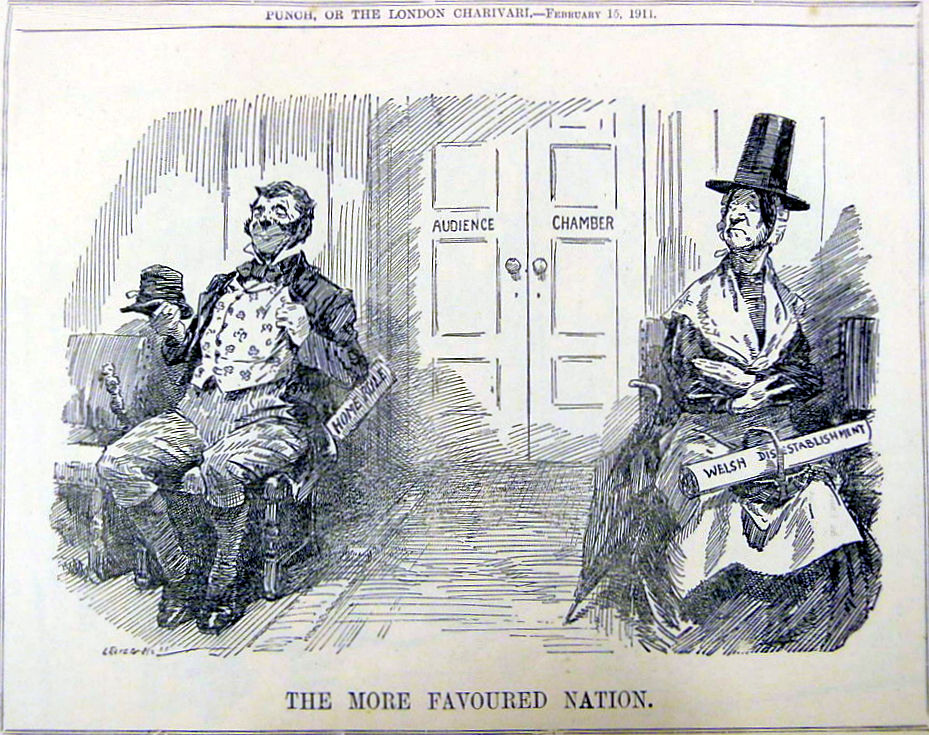"Disestablishment of the Welsh Church" Protests on Wednesday July 2nd 1913
Continuing with local historical events, we move towards the public protests over the "Disestablishment of the Welsh Church" on July 2nd, 1913.
Harwich had a large Welsh population, who were unhappy with the Government's Bill to disestablish the Welsh Church, so local protesters met at All Saints Church at Upper Dovercourt and then marched onto St Augustine's Church, Dovercourt they then went down to St Nicholas Church, at Harwich and finally to a large rally at Barrack Field, Dovercourt.
The first postcard shows demonstrators with banners outside St. Nicholas Church in Church Street, note the Hanover Public house in the Background.
This second card shows the clergy and choirs, plus supporters, in Wellington Road coming out onto to West Street towards Barrack Field.
The final card shows the full meeting on a rainy afternoon at Barack Field, Dovercourt.
The disestablishment of the Anglican Church in Wales was a controversial political issue in early 20th century society. From the 1860's onwards, the nonconformist churches had led a campaign for disestablishment in Wales.
A disestablishment measure was introduced in Parliament in 1894, but following the demise of the Liberal government it was shelved.
The measure passed into law in 1914 and came into effect in 1920.
Harwich had a large Welsh population, who were unhappy with the Government's Bill to disestablish the Welsh Church, so local protesters met at All Saints Church at Upper Dovercourt and then marched onto St Augustine's Church, Dovercourt they then went down to St Nicholas Church, at Harwich and finally to a large rally at Barrack Field, Dovercourt.
The first postcard shows demonstrators with banners outside St. Nicholas Church in Church Street, note the Hanover Public house in the Background.
This second card shows the clergy and choirs, plus supporters, in Wellington Road coming out onto to West Street towards Barrack Field.
The final card shows the full meeting on a rainy afternoon at Barack Field, Dovercourt.
The disestablishment of the Anglican Church in Wales was a controversial political issue in early 20th century society. From the 1860's onwards, the nonconformist churches had led a campaign for disestablishment in Wales.
A disestablishment measure was introduced in Parliament in 1894, but following the demise of the Liberal government it was shelved.
The measure passed into law in 1914 and came into effect in 1920.
~ No 8 Disestablishment of Welsh Church, Harwich (1913) Wallis H&D ~
Protesters outside St Nicholas Church, Church Street, Harwich, Essex in July 2nd 1913.
Campaigning against the "Disestablishment of the Welsh Church". In the background is the Hanover public house.
Campaigning against the "Disestablishment of the Welsh Church". In the background is the Hanover public house.
~ No 7 Disestablishment of Welsh Church, Harwich (1913) Wallis H&D ~
Protesters and Choirs walking from West Street into Wellington Road (on their way to Barrack Field) Harwich, Essex in July 2nd 1913.
The campaign was against the "Disestablishment of the Welsh Church".
The campaign was against the "Disestablishment of the Welsh Church".
~ No 4 Disestablishment of Welsh Church, Dovercourt (1913) Wallis H&D ~
Protesters and Choirs congregating at Barrack Field, on a rain swept afternoon at Harwich, Essex on July 2nd 1913. The campaign was against the "Disestablishment of the Welsh Church".
At the meeting, Colonel Ward took the chair and Mr. Hugh-Jones, clerk to the Harwich Harbour Conservancy Board, moved the resolution that ''we solemnly and conscientiously protest against the Disestablishment and Disendowment of the Church of Wales''.
The resolution was supported by the Reverend Telford and carried unanimously, with shouts of ''We do'' from the assembled crowd.
At the meeting, Colonel Ward took the chair and Mr. Hugh-Jones, clerk to the Harwich Harbour Conservancy Board, moved the resolution that ''we solemnly and conscientiously protest against the Disestablishment and Disendowment of the Church of Wales''.
The resolution was supported by the Reverend Telford and carried unanimously, with shouts of ''We do'' from the assembled crowd.
A souvenir of one of the many demonstrations & Protests that took place around 1912 - 1913
"Diddling the donkey"
Western Mail, 14 March 1907
David Lloyd George’s ability to distract and prevaricate, whilst appearing to offer a way forward, allowed the traditional reader of the Western Mail to revel in both his artifice and the apparent dupability of the Nonconformists.
David Lloyd George’s ability to distract and prevaricate, whilst appearing to offer a way forward, allowed the traditional reader of the Western Mail to revel in both his artifice and the apparent dupability of the Nonconformists.
